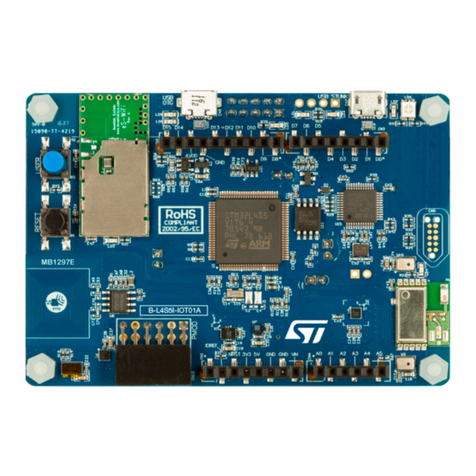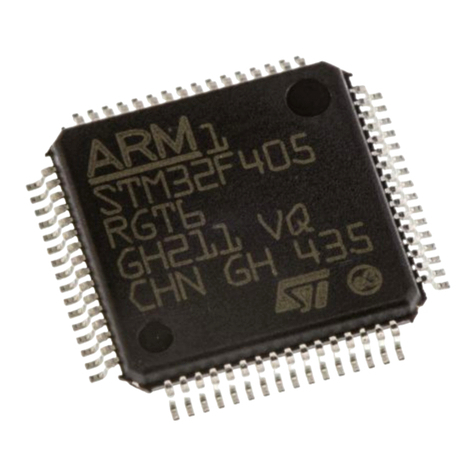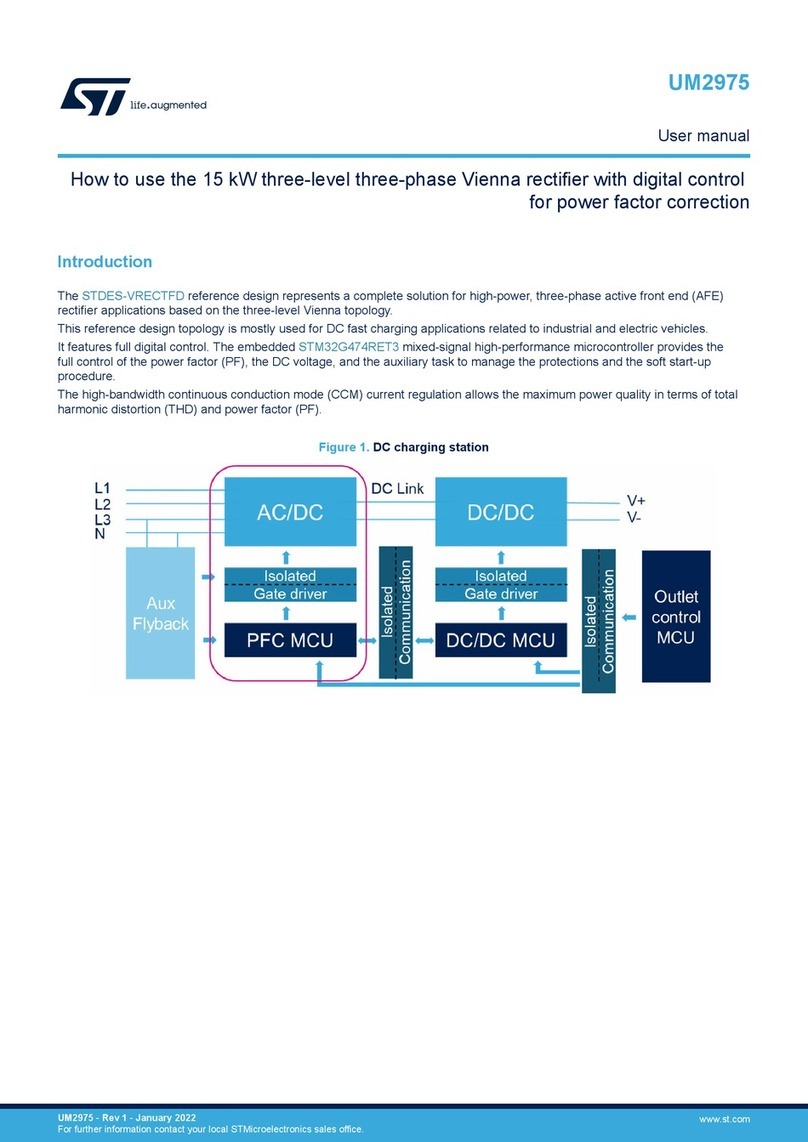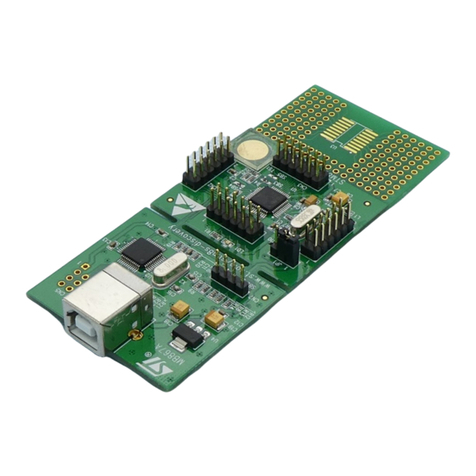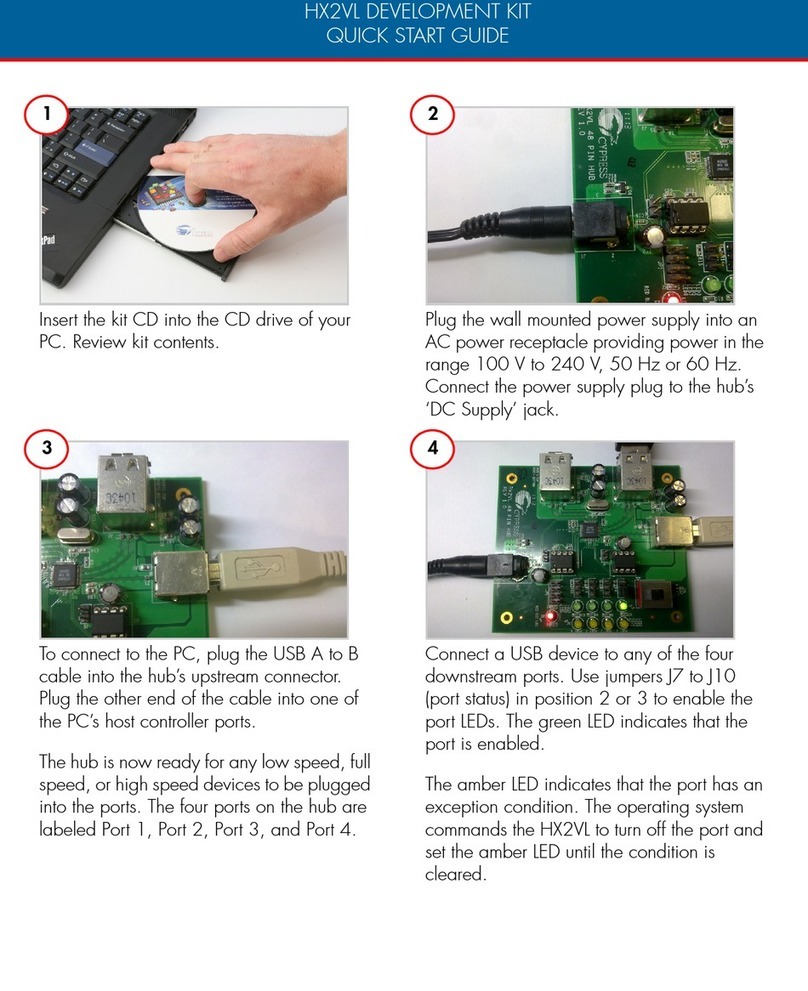ST STM32F2 Series User manual
Other ST Microcontroller manuals
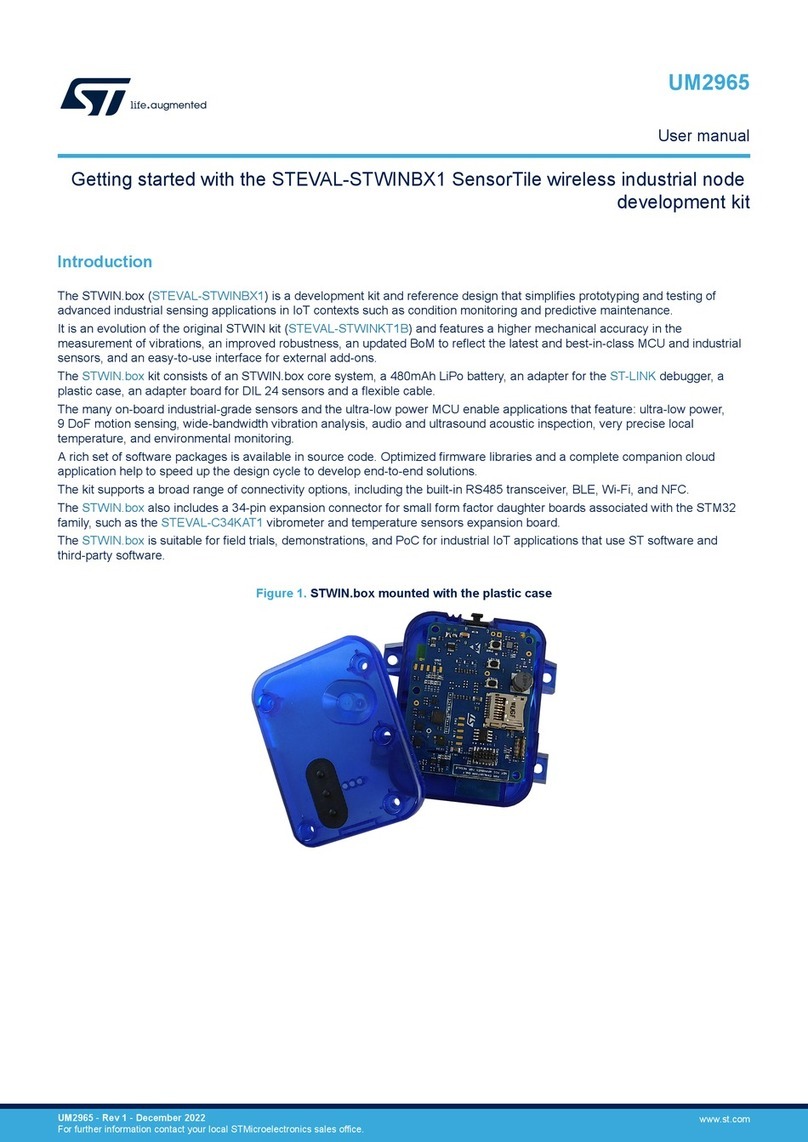
ST
ST STEVAL-STWINBX1 User manual
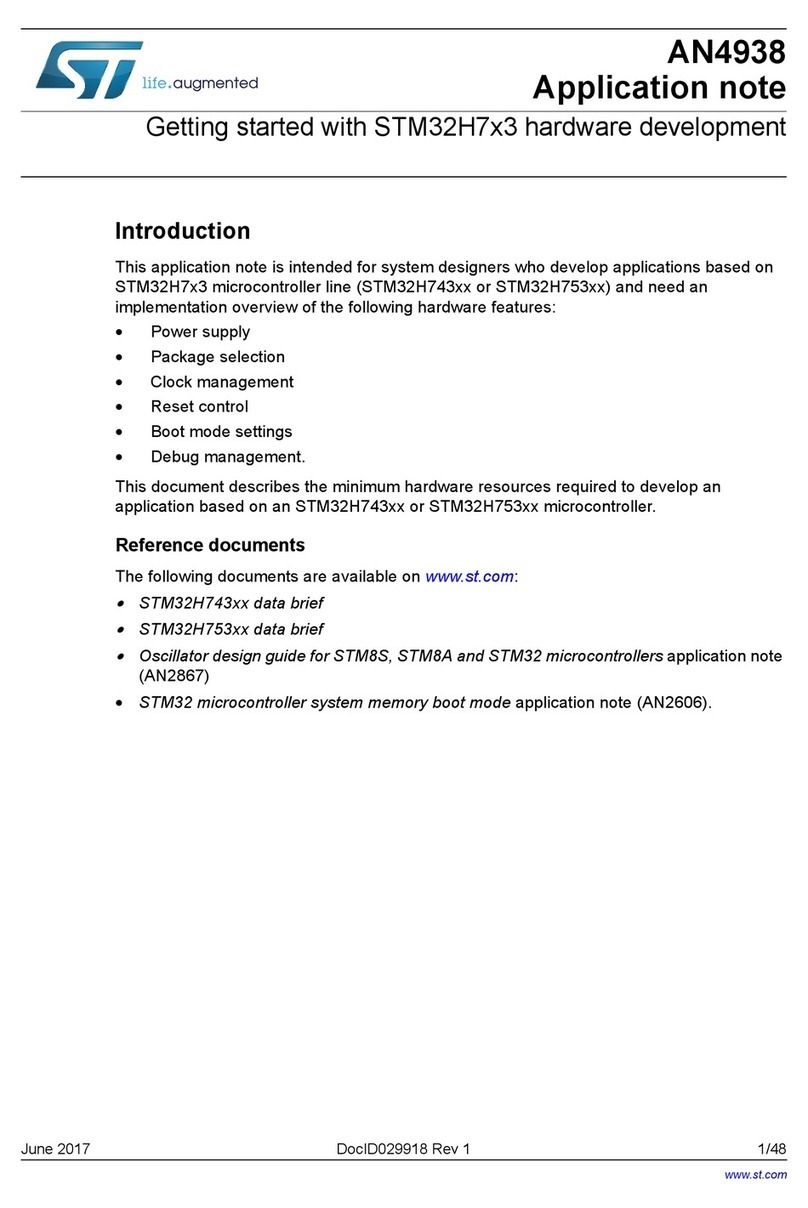
ST
ST STM32H7 3 Series Installation and operating instructions
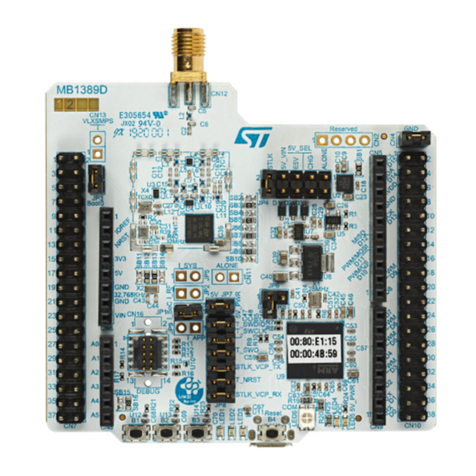
ST
ST STM32WL5 Series User manual
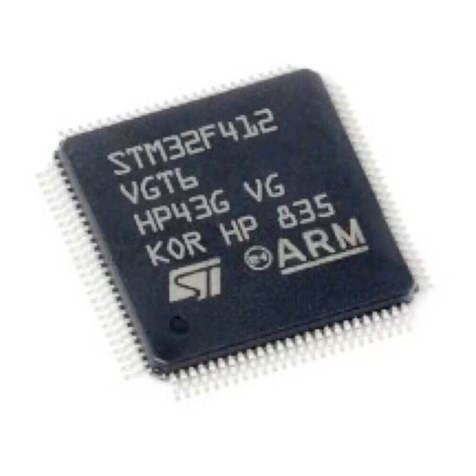
ST
ST STM32F412 User manual
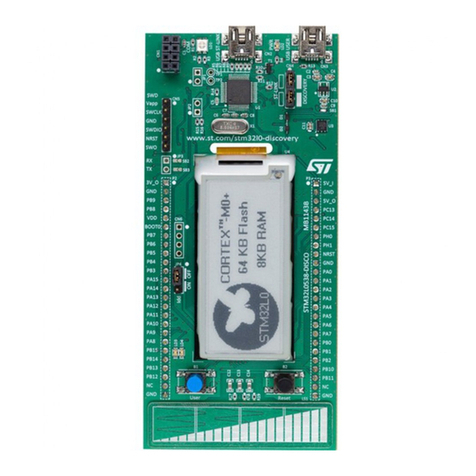
ST
ST STM32F0 Series Owner's manual
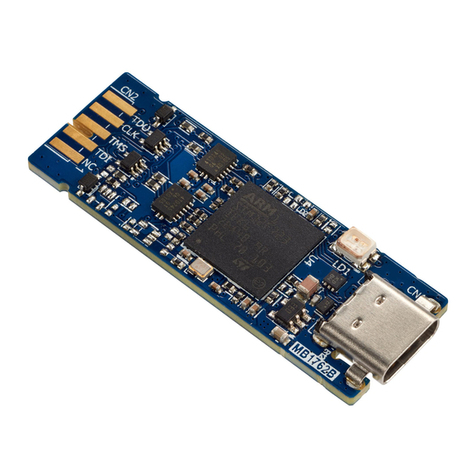
ST
ST STLINK-V3MINIE User manual

ST
ST UM0250 User manual
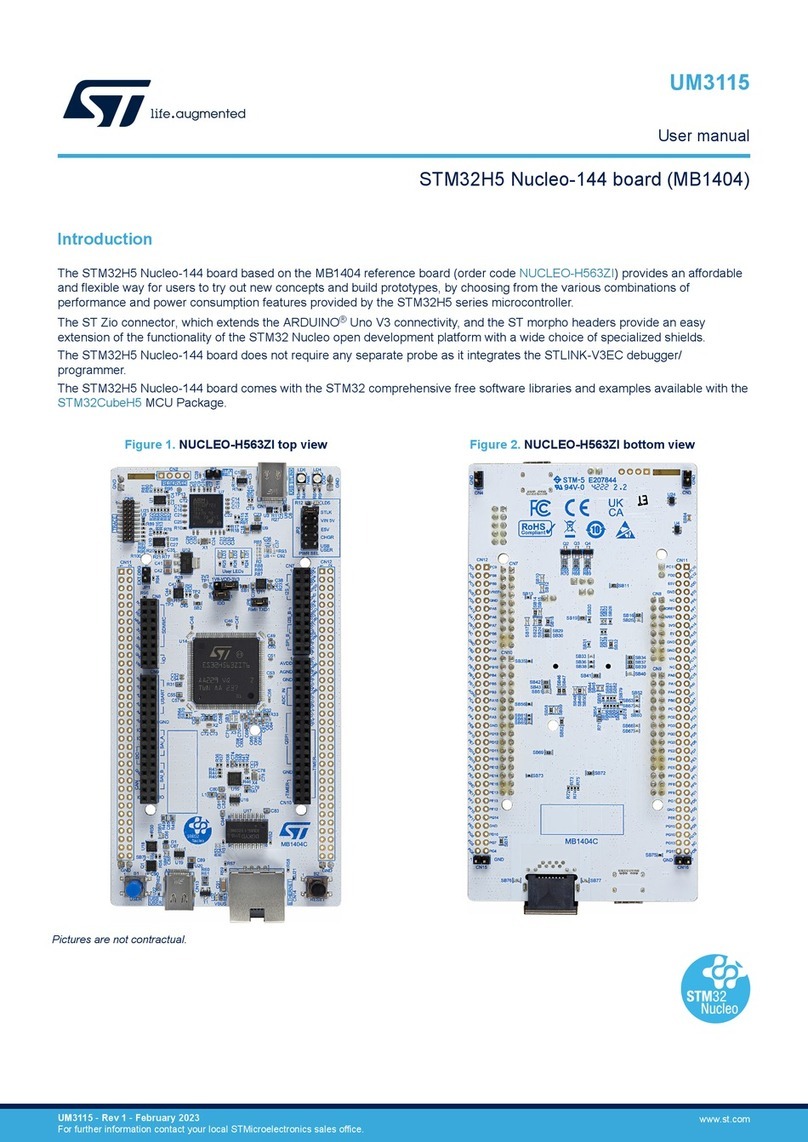
ST
ST STM32H5 Nucleo-144 User manual
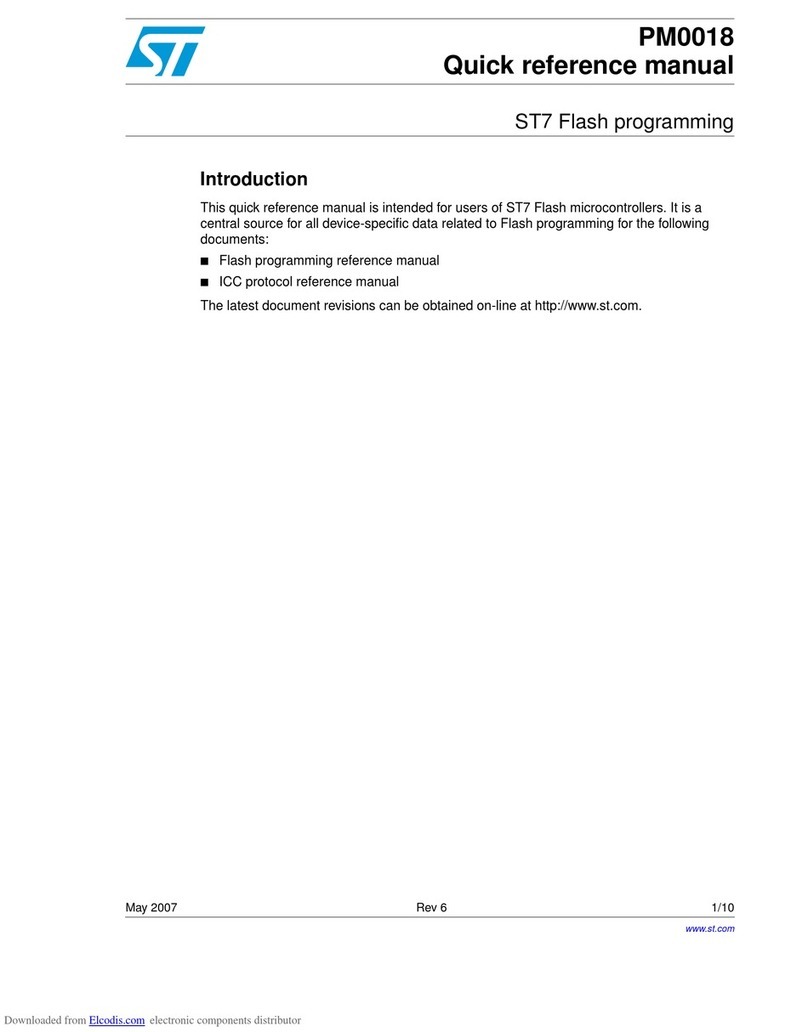
ST
ST Flash ST7 Service manual
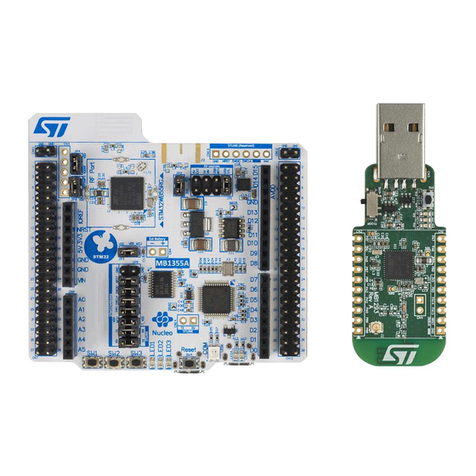
ST
ST P-NUCLEO-WB55 User manual
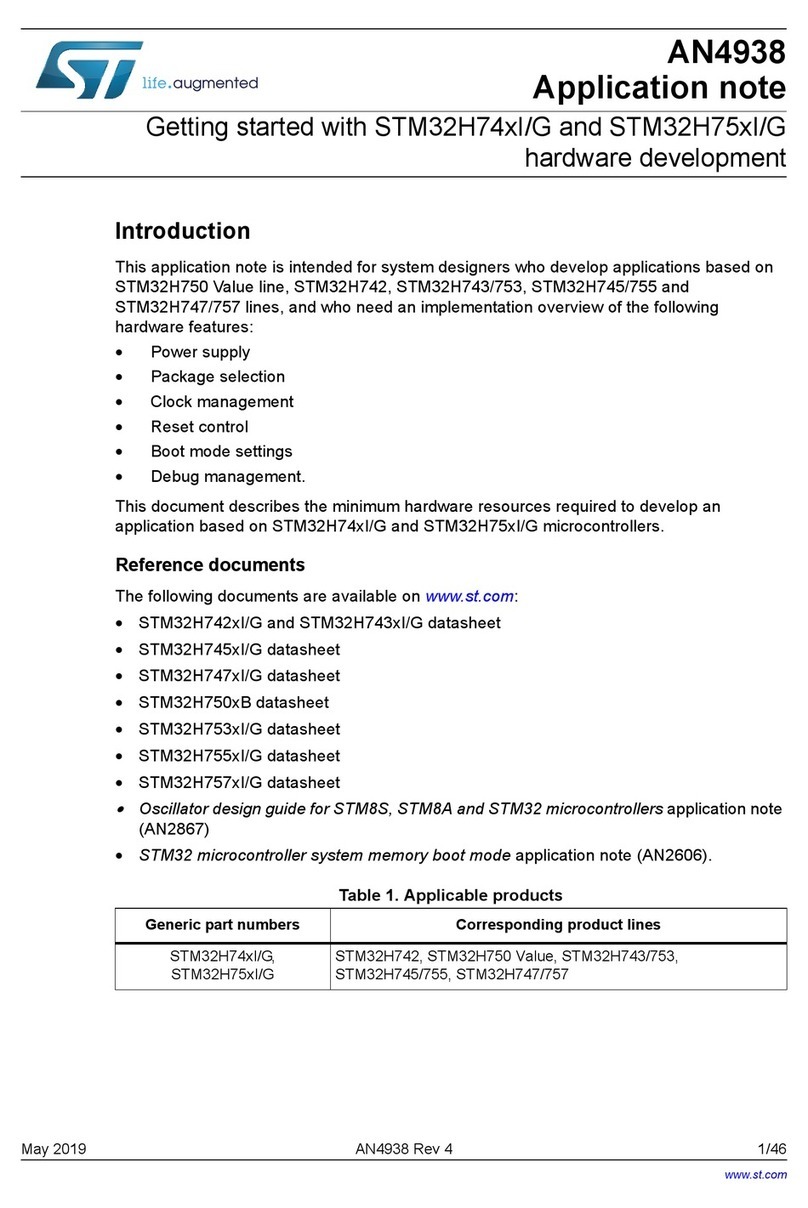
ST
ST STM32H74xI/G User manual
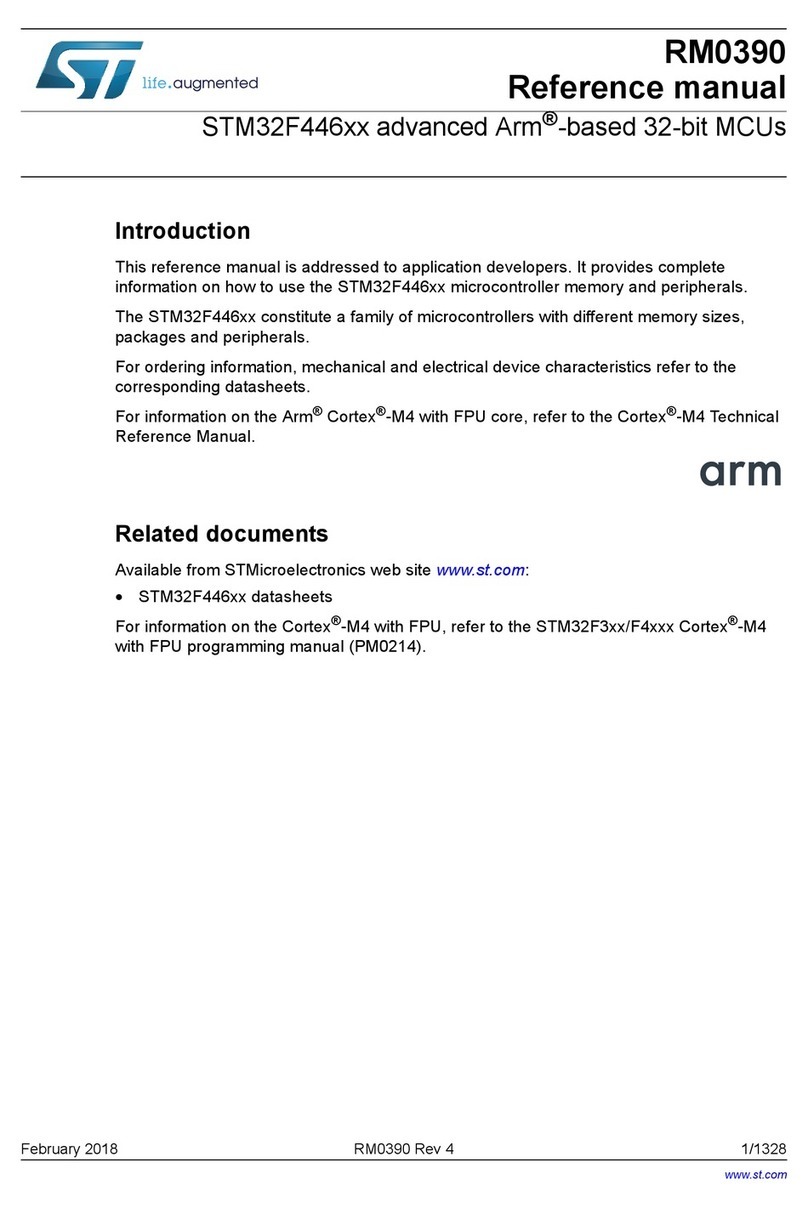
ST
ST STM32F446 Series User manual

ST
ST STM32F0 Series Installation and operating instructions
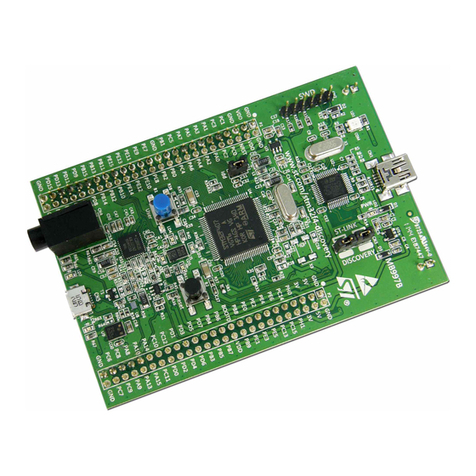
ST
ST STM32F4 Series User manual
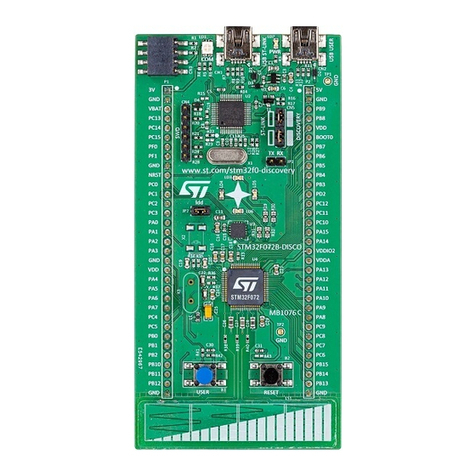
ST
ST STM32F072 User manual
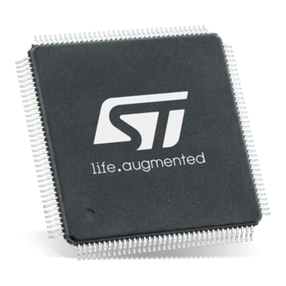
ST
ST STM32F2 Series User manual
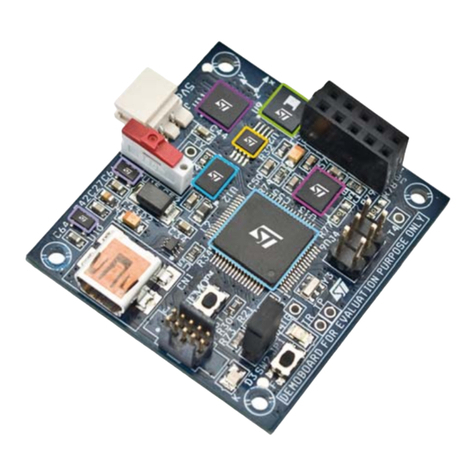
ST
ST iNEMO STEVAL-MKI062V2 Series User manual
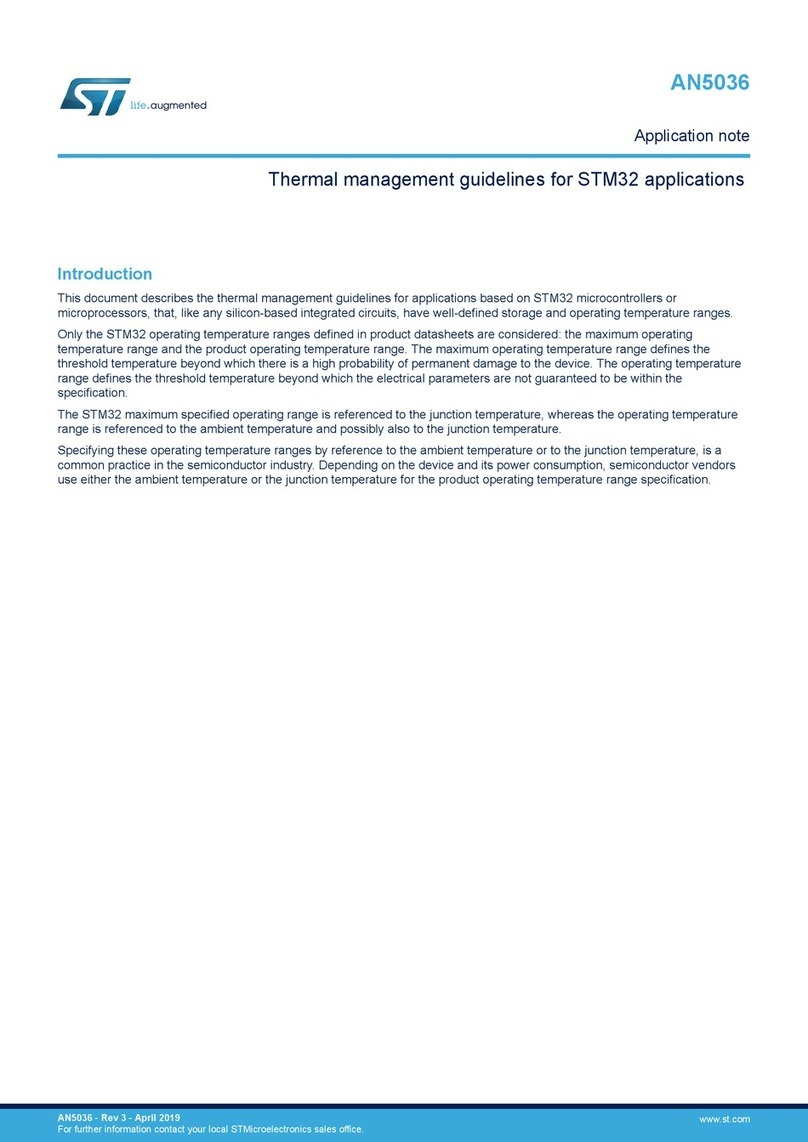
ST
ST STM32 Nucleo Installation and operating instructions

ST
ST STM32 Nucleo Installation and operating instructions

ST
ST VD6283 User manual
Popular Microcontroller manuals by other brands

Novatek
Novatek NT6861 manual
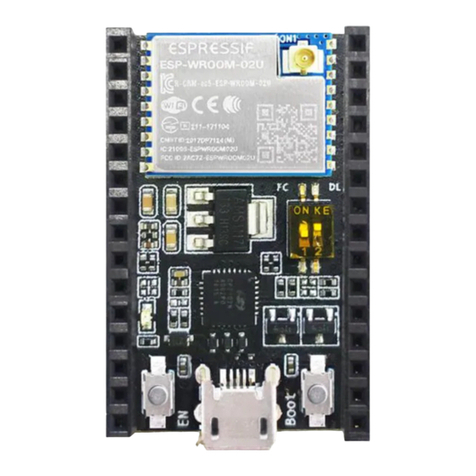
Espressif Systems
Espressif Systems ESP8266 SDK AT Instruction Set

Nuvoton
Nuvoton ISD61S00 ChipCorder Design guide

STMicrolectronics
STMicrolectronics ST7 Assembler Linker user manual

Texas Instruments
Texas Instruments Chipcon CC2420DK user manual

Lantronix
Lantronix Intrinsyc Open-Q 865XR SOM user guide
